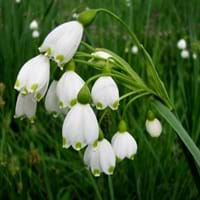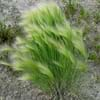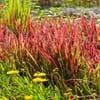Life Span
Perennial
Perennial
Type
Grass
Bulb or Corm or Tuber
Origin
World/Pandemic, North America, Europe
Europe, Mediterranean, Northern Africa, Western Asia
Types
Lustrous Creeping Red Fescue, Rubra trichophylla, Rubra rubra
Not available
Habitat
Wide range of ecological site
Damp shady woods, Hedgebanks, Mediterranean region
USDA Hardiness Zone
2-7
Not Available
AHS Heat Zone
7 - 1
Not Available
Sunset Zone
A2, A3, 1a, 1b, 2a, 2b, 3a, 3b, 4, 5, 6, 7, 8, 9, 10, 14, 15, 16, 17, 18, 19, 20, 21, 22, 23, 24
21,22
Habit
Mat-forming
Clump-Forming
Flower Color
Not Available
White, Light Pink
Flower Color Modifier
Bicolor
Bicolor
Fruit Color
Non Fruiting Plant
Not Available
Leaf Color in Spring
Dark Green
Green
Leaf Color in Summer
Light Green
Light Green
Leaf Color in Fall
Dark Green
Several shades of Green
Leaf Color in Winter
Tan
Light Green
Leaf Shape
Grass like
Strap shaped
Plant Season
Spring, Summer, Fall, Winter
Spring, Summer, Fall, Winter
Sunlight
Full Sun, Partial Sun, Partial shade
Full Sun, Partial Sun, Partial shade
Growth Rate
Medium
Medium
Type of Soil
Clay, Loam, Sand
Loam, Sand
The pH of Soil
Acidic, Neutral
Acidic, Neutral, Alkaline
Soil Drainage
Average
Well drained
Bloom Time
Early Summer, Summer, Late Summer
Early Spring, Spring, Late Spring, Early Summer, Late Summer, Winter, Late Winter
Tolerances
Not Available
Drought, Light Frost, Variety of soil types
Where to Plant?
Ground
Ground, Pot
How to Plant?
From Rhizomes
Divison, Seedlings, Seperation
Plant Maintenance
Medium
Low
Watering Requirements
Needs 2-3 times watering per week
Needs less watering
In Summer
Lots of watering
Lots of watering
In Spring
Moderate
Moderate
In Winter
Average Water
Average Water
Soil pH
Acidic, Neutral
Acidic, Neutral, Alkaline
Soil Type
Clay, Loam, Sand
Loam, Sand
Soil Drainage Capacity
Average
Well drained
Sun Exposure
Full Sun, Partial Sun, Partial shade
Full Sun, Partial Sun, Partial shade
Pruning
Prune grass to maintain level
Remove damaged leaves, Remove dead branches, Remove dead leaves
Fertilizers
fertilize in fall
Bulb fertilizer
Pests and Diseases
Billbugs, Dollar spot, Pythium blight, Red blotch, Red thread, White grubs
Narcissus Bulb Fly, Slugs
Plant Tolerance
Not Available
Drought, Light Frost, Variety of soil types
Flowers
Insignificant
Showy
Flower Petal Number
Single
Single
Foliage Texture
Fine
Fine
Foliage Sheen
Matte
Matte
Attracts
Bugs
Ants, Bees, pollinators
Allergy
Asthma
Not Available
Aesthetic Uses
Ground Cover
Beautification, Bouquets, Cottage Garden, Ground Cover, Showy Purposes
Beauty Benefits
Not Available
Anti-ageing
Environmental Uses
Erosion control, Wildlife
Air purification
Medicinal Uses
No Medicinal Use
Alzheimer’s Disease
Part of Plant Used
Whole plant
Flowers, Root
Other Uses
Used as Ornamental plant
Used as Ornamental plant
Used As Indoor Plant
No
No
Used As Outdoor Plant
Yes
Yes
Garden Design
Edging, Groundcover, Lawns and Turf, Mixed Border, Rock Garden / Wall
Alpine, Container, Cutflower, Lawns and Turf, Mixed Border, Rock Garden / Wall, Wildflower
Botanical Name
FESTUCA rubra
Leucojum aestivum
Common Name
Red Fescue
Leucojum, summer snowflake
In Hindi
Red Fescue
Leucojum
In German
Rotschwingel
Leucojum
In French
fétuque rouge
Leucojum
In Spanish
festuca roja
Leucojum
In Greek
κόκκινο Φεστούκα
Leucojum
In Portuguese
Red festuca
Leucojum
In Polish
Kostrzewa czerwona
Leucojum
In Latin
Red Fescue
Leucojum
Phylum
Magnoliophyta
Magnoliophyta
Class
Liliopsida
Liliopsida
Clade
Angiosperms, Commelinids, Monocots
Angiosperms, Monocots
Tribe
Not Available
Not Available
Subfamily
Not Available
Amaryllidoideae
Number of Species
Not Available
Season and Care of Red Fescue and Leucojum
Season and care of Red Fescue and Leucojum is important to know. While considering everything about Red Fescue and Leucojum Care, growing season is an essential factor. Red Fescue season is Spring, Summer, Fall and Winter and Leucojum season is Spring, Summer, Fall and Winter. The type of soil for Red Fescue is Clay, Loam, Sand and for Leucojum is Loam, Sand while the PH of soil for Red Fescue is Acidic, Neutral and for Leucojum is Acidic, Neutral, Alkaline.
Red Fescue and Leucojum Physical Information
Red Fescue and Leucojum physical information is very important for comparison. Red Fescue height is 5.10 cm and width Not Available whereas Leucojum height is 7.60 cm and width Not Available. The color specification of Red Fescue and Leucojum are as follows:
Red Fescue flower color: Not Available
Red Fescue leaf color: Dark Green
Leucojum flower color: White and Light Pink
- Leucojum leaf color: Green
Care of Red Fescue and Leucojum
Care of Red Fescue and Leucojum include pruning, fertilizers, watering etc. Red Fescue pruning is done Prune grass to maintain level and Leucojum pruning is done Remove damaged leaves, Remove dead branches and Remove dead leaves. In summer Red Fescue needs Lots of watering and in winter, it needs Average Water. Whereas, in summer Leucojum needs Lots of watering and in winter, it needs Average Water.





